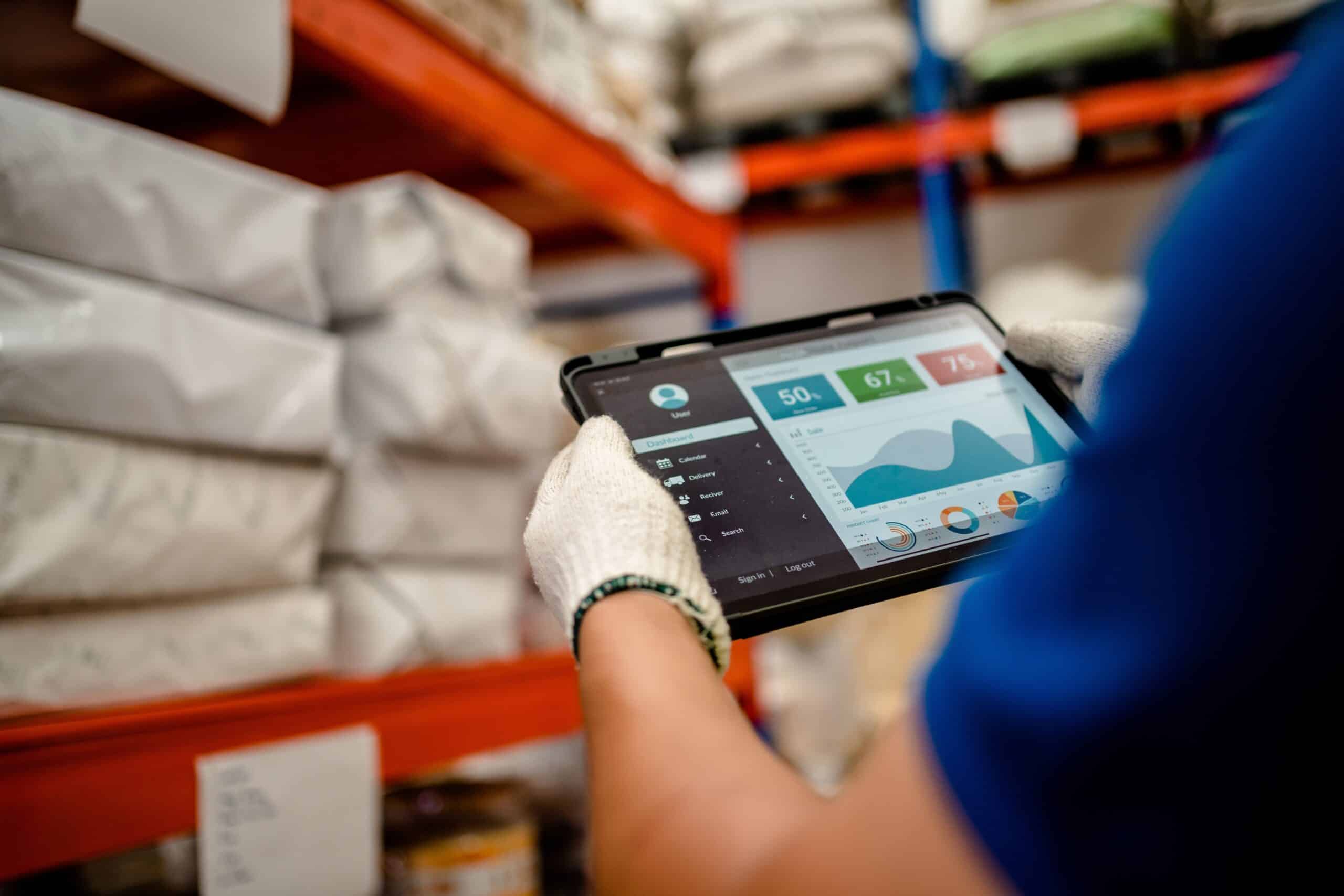What We’ll Unpack in This Article (TL;DR)
Inventory-based businesses today constantly struggle between cutting product costs and maintaining stock availability. Inventory optimization software solves this by providing you with:
- Accurate, AI-based demand forecasting that reduces safety stock needs.
- Dynamic safety stock & service level planning to prevent stockouts.
- Supplier monitoring tools that highlight risk before they disrupt your supply chain.
- Inventory strategization to help you focus your investments where they matter most.
This article explores how today’s cutting-edge inventory management software helps you manage the delicate tradeoff between cost and availability, empowering teams to make confident, profitable decisions.
Inventory-based businesses today face an ongoing challenge: they need to constantly strike the right balance between supply chain costs and product availability. And the stakes are high – when too much inventory is stocked on shelves, cash gets trapped. And when you hold too little, you lose sales and credibility. That’s where inventory optimization software becomes a key differentiator.
Rather than guessing, this technology helps you align supply and demand through AI-driven demand forecasting, service-level modeling, and intelligent analysis. This allows businesses to root their inventory purchases in fact, and always keep an optimal amount of inventory on the shelves.
Why Do Businesses Need to Balance Cost and Availability?
At its core, inventory optimization is really a balancing act. Leaders need to weigh the financial cost of holding stock against the service level needs of customers. These two sides of the scale are always in a game of tug-of-war. Push too far towards minimizing costs, and you risk stockouts and lost sales. Overcorrect toward availability, and you tie up cash, inflate carrying costs, and hurt your margins (economic data shows that US retailers are sitting on about $740 billion of unsold inventory).
Balancing costs and availability is about finding the optimal point where you meet demand reliably without overspending on inventory. Modern inventory optimization software makes this possible by using AI-driven forecasting, service-level modelling, and SKU-level analysis to simulate thousands of cost-service scenarios.
Why Legacy Tools Fall Short
Many organizations try to manage inventory balance using the tools they already have, including spreadsheets, ERP systems, or manual reports. While these tools can track what’s on hand, they struggle to function at-scale, and rarely reveal why inventory is off balance (or how to fix it).
For example, most inventory-based businesses use enterprise resource planning (ERP) solutions, which include broad functionality in areas ranging from finance to HR. While these tools have widespread applications, they often lack the depth and flexibility needed for true, profitable inventory optimization. Why? ERPs can tell you how much you have in stock, but not how much you should have, or where inventory could be better positioned across your network.
Spreadsheets are another example. They’re quick to get up-and-running, customizable, and easy to share. But as your product portfolio grows, spreadsheets become a liability. Manual inputs invite errors and formulas break. More critically, spreadsheets can’t run complex simulations that weigh service levels, lead times, and carrying costs together.
Inventory optimization software becomes the missing link. It’s predictive, analytical, and nuanced, showing leaders what decisions they should make to maximize outcomes.
How Does Inventory Optimization Software Work?
Inventory optimization software turns what used to be a guessing game into a precise, data-driven process. Instead of reacting to shortages, surpluses, or supplier delays, businesses can anticipate them, and plan accordingly.
Here’s how inventory optimization software works:
1. Accurate, AI-powered demand forecasting
Today’s leading demand planning software uses statistical modeling, artificial intelligence in inventory management, machine learning, and granular controls to predict demand across products, customers, and locations. They include features for seasonality/holiday handling, promo/event considerations, and controls for outliers, new products, and end-of-life. This degree of demand forecasting allows leaders to accurately predict future demand, disregard outlier events, and plan for different scenarios. And the AI level is important: research from McKinsey shows that AI can significantly help with stock reduction strategies, logistics cost, and procurement spend.
2. Dynamic safety stock & service level planning
Safety stock is a vital buffer against uncertainty, but too much or too little can erode margins. To ensure accurate levels, inventory optimization software calculates SKU-specific safety stock levels, based on forecasts, supplier lead times, usage patterns, and target service levels. This allows teams to treat each SKU separately, master inventory replenishment, avoid blanket reorder points, and ensure safety stock levels are both low and effective.
3. Intelligence inventory stratification
Not all SKUs should be treated the same, because some are more valuable to your bottom line than others. Today’s leading inventory optimization software includes features for categorizing items by value and predictability, such as ABC analysis. This system classified items by their value and their quantity, so you can quickly see at-a-glance which items you should focus on.
4. Continuous supplier monitoring
Inventory management doesn’t happen in a bubble: your suppliers play a key role in your ability to execute inventory plans. That’s why continuous supplier monitoring is a critical part of inventory optimization – it ensures that what you plan to sell can actually be supplied on time, at the right price.
Modern inventory management software makes this possible by providing you with lead time tracking, supplier scorecards, and proactive alerts, to monitor their performance in real time. For example, instead of waiting until late deliveries cause shortages or expedited shipping costs, you can spot risks before they disrupt your supply chain, and make proactive corrective decisions.
Inventory management software unites all of these features and capabilities in one platform. By transforming raw supply chain data into actionable insights, these tools give decision-makers the clarity they need to maintain the perfect balance between cost efficiency and product availability.
How to Get Started with Inventory Optimization Software
Whether you’re rolling out inventory optimization software for the first time or you want to switch to a new solution, implementation doesn’t have to be overwhelming.
Here’s how to get started:
1. Assess your current inventory landscape
Before bringing in new inventory management tech, take stock (literally) of your current processes and results. Ask yourself:
- What are your biggest pain points? Excess inventory, stockouts, long lead times?
- Which metrics do you currently track, and which are your missing, like service level, forecast accuracy, or carrying costs?
Understanding your baseline gives you a measurable starting point for improvement, and ensures the software you choose is able to solve your problems.
2. Define inventory goals and KPIs
Inventory optimization doesn’t mean slashing stock. It allows you to carry quantities of stock that are both profitable and meet service levels. With that in mind, define clear inventory objectives, such as improving forecast accuracy by 10-20%, or reducing excess and obsolete inventory by 5%.
Setting precise targets ensures your software configuration (and team’s focus) aligns with tangible outcomes.
3. Choose the right inventory optimization software
Now, you’re ready to select a software that meets your needs. Consider your goals, and cross-reference them with features that different platforms are offering. Also, prioritize demand planning software vendors that include abilities such as:
- Powerful AI-driven forecasting engines.
- Event and anomaly management.
- Inventory stratification features.
- Supplier management and lead time intelligence tools.
- SIOP and finance alignment.
Choosing a perfect-fit software ensures that it’ll actually boost profits, improve workflows, and reduce inventory distortion.
By combining accurate data, clear goals, and cross-functional collaboration, you’ll finally achieve the balance every business strives for: lower costs, higher availability, and a supply chain that runs with precision.
StockIQ: Inventory Optimization Software that Drives Revenue
Balancing costs and availability has always been one of the toughest challenges in supply chain management. But with the right inventory optimization software, you can turn scattered data into clear, actionable insight, helping you predict demand, manage suppliers, and invest in the right inventory at the right time. For that, you can turn to StockIQ.
StockIQ is a supply chain planning suite built for businesses like yours that uses advanced technologies to help enhance the way you handle your inventory, allowing you to avoid costly distortion and improve visibility.
Are you interested in learning how StockIQs supply chain planning suite can help your organization? Contact us today or request a StockIQ demo.

